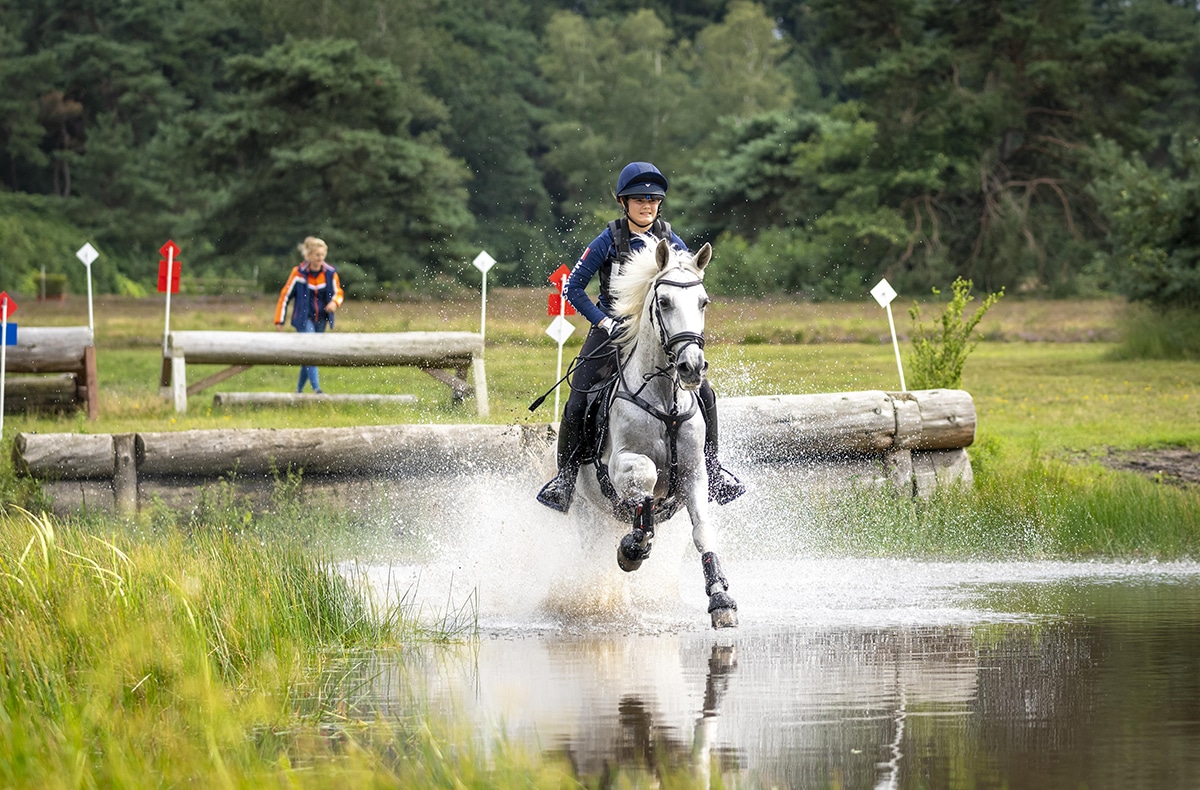
You’ve probably heard of it as a horse owner: vitamin E. This powerful antioxidant can support horses when they need to recover, are stressed, or are being trained. Vitamin E helps your horse protecting the (muscle) cells and tissues against free radicals and can support the immune system of horses. But how does it actually work, and is supplementing with vitamin E advisable?
Horses, unlike humans, are largely capable of producing vitamins themselves. An example of this is vitamin C, which is produced in the liver, and vitamins B and K, which are produced by the microbiota in the cecum and colon. However, it is not possible for horses to produce vitamin E themselves. Therefore, it is important to ensure that horses receive sufficient vitamin E through their diet.
As we mentioned earlier, vitamin E is important for various parts of your horse’s body. One of its primary roles is to protect cells, including muscle cells, from free radicals. As a result, vitamin E supports the normal functioning of muscles. A deficiency in vitamin E can increase the risk of muscle damage after training. Therefore, the heavier the training load on a horse, the higher its need for vitamin E. A deficiency in vitamin E can cause various symptoms such as reduced immunity and muscle stiffness. Stressed, recovering, or horses with muscle disorders can also benefit from a higher level of vitamin E in their diet.
Vitamin E is naturally found in, among other things, fresh grass in the pasture and in lucerne. Despite vitamin E occurring naturally in grass, the levels in haylage and hay can be extremely low. The amount of vitamin E naturally present in forage can also fluctuate.
In addition to products where vitamin E naturally occurs, it can also be added to feed. This is usually done in the form of a premix, which is a mixture containing vitamins, minerals, and trace elements. Through this method, among others, vitamin E can be added to supplements, balancers, and concentrates.
There are multiple sources (see table below) that describe the vitamin requirements for horses. The recommendations followed may vary from country to country. Additionally, there is also a difference between minimum requirements and optimal requirements. The minimum requirement of vitamin E is necessary for the functioning of your horse’s bodily functions. However, if you have a horse that becomes stressed quickly or needs to recover after training? Then it might be wise to adhere to the optimal requirement of vitamin E.
| Vitamin E requirement for a 600 kg horse | Source 1: North American Authorities NRC Minimum requirement | Source 2: German Authorities GEH Minimum Requirement | Source 3: Equine Applied Clinical Nutrition Minimum Requirement | Source 4: Equine Applied Clinical Nutrition Optimal Requirement |
| Horses with maintenance requirements | 600 IU | 636 IU | 636 IU | 1200-1800 IU |
| Horses in training | 960-1200 IU | 1320 IU | 636-1272 IU | 1800-3000 IU |
To determine the amount of vitamin E in your horse’s feed, you can check the label. The added content of vitamin E is indicated on the label.
Tip: When looking at your label, consider your daily dosage. The listed values are the levels per kilogram of product. For some products, you feed 100 grams, and for others, a kilogram. So always check how much vitamin E your horse is getting based on the recommended amount of feed.
We recommend providing your horse with concentrate feed or a balancer throughout the year, even if it’s out on pasture 24/7 during the summer. The nutritional content of grass can also vary. This way, you’re not relying on uncertain values, and you can ensure that your horse doesn’t have any deficiencies in its diet.
A horse does not develop an excess of vitamin E quickly. To provide guidance, recommendations have been established regarding the maximum levels of vitamin E in horses’ diets. –
| Horse 600 kg | Mg vitamin E / day | Amount of Essential per day | |
| Toxicity level | Acute | 15 000* | 3.5 kg (10 times the recommended amount of Hartog Essential per day) |
| Recommended limit (unless there is a specific clinical reason) | Long-term | 6 000 | 1.4 kg (4 times the recommended amount of Hartog Essential per day) |
If your horse accidentally received two servings of feed, there’s no problem at all!
Because it’s important for the overall health of your horse to have a balanced diet, we recommend looking for a complete feed that contains the optimal level of vitamin E. This way, you won’t need to mix various balancers or supplements, which is always preferable for a diet.
Examples of feeds with optimal levels of vitamin E include Hartog Comfort or Hartog Essential. In these two Hartog products, extra vitamin E has been added to ensure optimal levels. As a result, you may notice that the vitamin E content is higher than in other balancers. The vitamin E content for a horse weighing 600 kg when feeding Hartog Essential and Hartog Comfort is 1500 IU per day.
Receive the latest offers, exclusive content and news from Hartog Family Farms.

Grasdrogerij Hartog B.V.
Mijnsherenweg 7
1658 CA Lambertschaag
0229 – 58 12 32
info@hartog.eu